Before you even start I also recommend reading the continuation of this article and also the final conclusion about my USB tests, they are quite interesting and shed an embarrasing light onto the first two.
You might find it ridiculous that I´m talking about sonic differences between USB cables but let me assure that they exist. In theory though - and the audiophile objectivists will tell you that I´m obviously insane, mad or the devil - there shouldn´t be differences at all. I mean, a USB cable is just a digital cable that works inside a computer environment and - unlike an analogue cable affected by magnetism, distortions, noise, etc. - follows a certain set of rules and is unaffected by usual cable defects just like any digital cable. But countless people have claimed that if they connect their USB soundcard to a (usually much) more expensive high-end cable from a boutique manufacturer the sound of this soundcard will be improved considerably. Yes, some of these people are really mad: would you, dear reader, connect a USB soundcard for $ 500 to a USB cable for another $ 500? Yeah, me neither... oh wait, I´m gonna do the same - albeit on a much smaller scale. Gosh, I´m turning into one of those nincompoops full of bigotry ;). And I never was a bigot, I am Marlene Dietrich, an angel, a saint... oh, shut up.
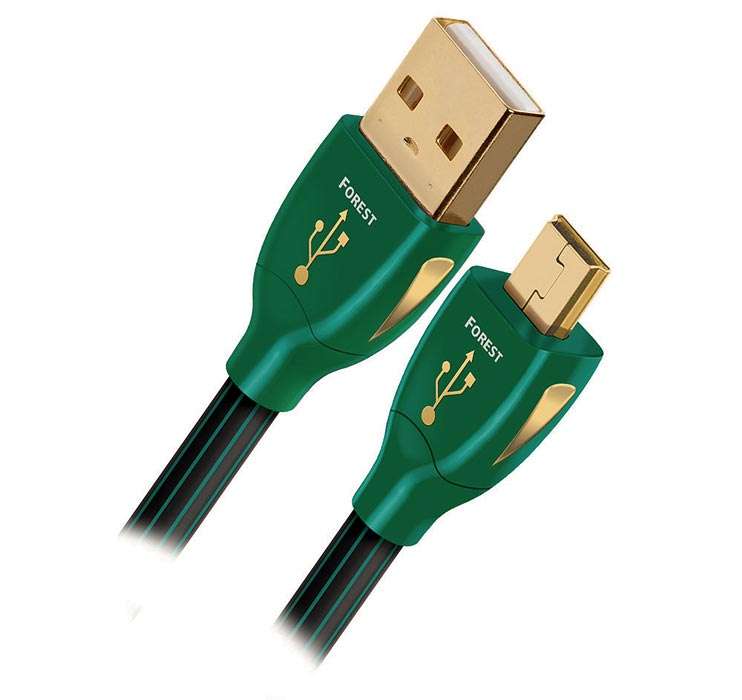 |
| Beautiful, isn´t it? (Copyright by Audioquest) |
Anyway, today I´m gonna review or look at an inexpensive USB cable, the Audioquest Forest USB (you can see it above) cable which I bought especially for my SoundBlaster X-Fi USB HD. I´ve owned a special USB cable before which I also bought for my first soundcard, the SoundBlaster Live! 24 Bit external. It was from Monster Cable, looked and felt cheap and was bought in 2004 for little money. The quality of this cable doesn´t seem to be good: after almost eight years in constant use it now starts to disintigrate, the plastic of the plugs looks coloured, the always blinking LED at one end has stopped blinking (which actually is a relief since the blinking was ennerving). That´s when I bought a USB cable from german manufacturer Oehlbach, much better build quality but almost no sonic difference to a standard cable. Then just a few months ago I bought the Impulse USB cable from NuForce and that one finally delivered the audio quality I expected from my external E-MU 0202. Finally a few weeks ago I bought the new Audioquest Forest because I couldnt´find an adapter in order to connect the NuForce Impulse to the Soundblaster (I needed a Micro plug). You can see by that little backstory that I quite believe in different sounding USB cables. Rather unusual as I pride myself in not being prone to audiophile bullshit. Even worse: all those years I have been trusting my ears only - but now with my new and wonderful SoundBlaster and the new cable from Audioquest I finally decided to do some measurments. And here is an important information that I´d like you to read very carefully: when I talk about "measurements" you cannot take that literally! From a scientific standpoint my results are nothing more then nice looking pictures. I don´t know how RMAA "measures" but the pictures you can see most likely are several separate results taken over an unspecified period of time that have been middled or averaged for the picture (in essence, the pictures are all graphs). For showing a real difference I would have to take my five "measurments" of one cable, average them, then take the other cable to do the same. Finally I would have to do a statistically valid comparison or calculation between those two averages to express the differences in percentages. But since I´m not a scientist and since I´m a jerk with statistics I won´t be (cannot) doing this, I´m just Marlene D. and I like to play around a lot.
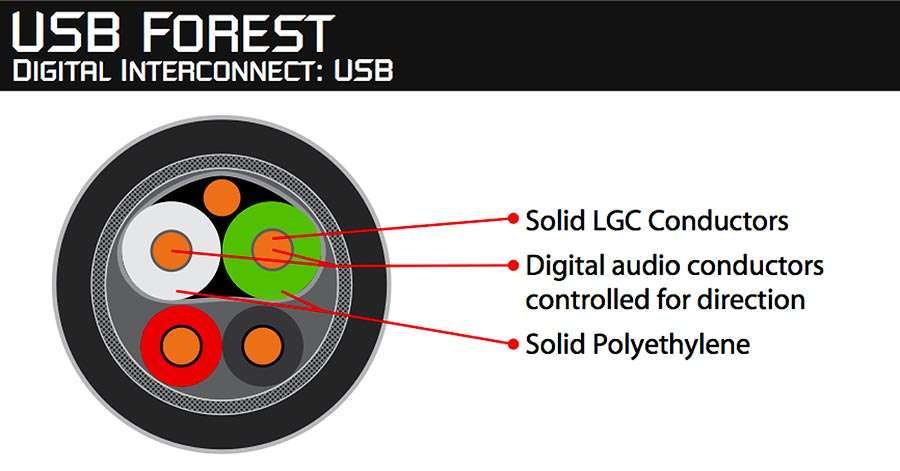 |
| This is how the cable looks from the inside according to Audioquest (copyright by Audioquest) |
As you can see above the cable uses solid copper conductors, just like every Audioquest cable. I also made very good experiences with my Audioquest Topaz (bought in the '90s) and my King Cobra (the silver connectors are awful though - because silver corrodes) so the decision for a cheap Audioquest cable was easy, it cost 29,- Euros (incl. shipping), half of what my SoundBlaster did cost. Yeah, paying half the money necessary for a brand new SoundBlaster - but for a cable instead.
Overkill, you say? Stupid? Maybe... but I´m gonna show you that my SoundBlaster measures different with this cable and I´m also gonna show you that it sounds different - much different in fact. And just like in my last review I will present to you some excerpts from some tracks I recorded from the SoundBlaster, the first time connected to the standard USB cable, the second time to the Audioquest cable. In case of the SoundBlaster playing back the music I recorded its output with my ASUS Xonar Essence ST (via ASIO with WaveLab), connected with the King Cobra RCA cable of course. On every recording the configuration and the playback / recording levels were exactly the same (on both cards: 0 dBfs) - only the USB cable was different. Samplerates were the same every time, playback was done with WASAPI Event Style on JRiver Media Center when the SoundBlaster was used and with ASIO when the ASUS was used for playback. And just in case: Windows was configured to use the samplerate of 96 kHz only in both cases (as was the ASUS). I even repeated the measurments five times with each cable because I couldn´t believe my eyes: I never expected the SoundBlaster to measure any different when used with different USB cables. But on to the measurments:
 |
| For this cable to be exact |
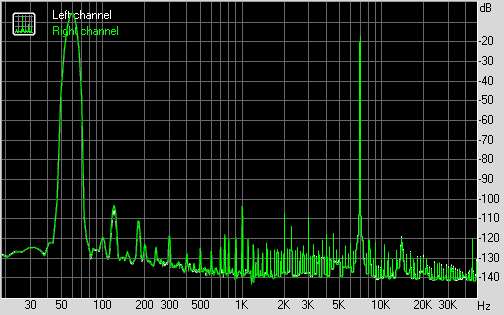 |
| IMD, standard cable, from SoundBlaster to ASUS |
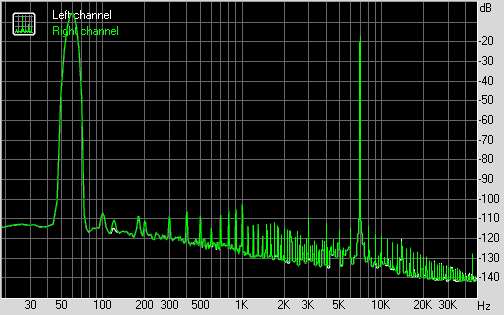 |
| IMD, Audioquest cable, from SoundBlaster to ASUS: the noise floor is much higher and more consistent |
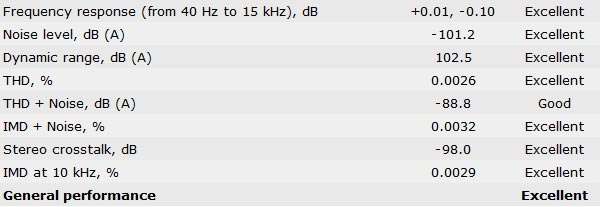 |
| Result general performance, standard cable, SoundBlaster to ASUS: pretty much like my first tests |
 |
| Result general performance, Audioquest cable, SoundBlaster to ASUS: much worse. Noisefloor increased for +6 dB, more distortions, more crosstalk. |
Surprised? Yeah, me too. I don´t know if the cables is broken. I only know that after seeing those results I tested it with my Sansa Clip+ and an external HDD - no errors or slower speed (because of re-reading faulty data) during data transmission. I assume it has something to do with the power supply unit in my PC, which would explain why these results only show when the SoundBlaster is connected to the ASUS. It´s curious because my power supply is a rather good one from Enermax, a well regarded manufacturer of power supplies. Or it´s my mainboard that is doing something wrong. Or something inside the cable isn´t connected and it´s on the brink of not functioning. I don´t really know, I can only guess. In any case, the SoundBlaster measures worse when connected to the Audioquest cable. Here are now my two ratings for the X-Fi HD USB with the standard cable and the Audioquest:
Standard cable:
Audioquest Forest USB
For testing I used two scores by Jerry Goldsmith: "Looney Tunes: Back in Action" from 2003 and "Dennis" from 1993. Since you will be able to download those two 30-seconds excerpts from these scores I´m going to explain to what things you have to pay attention to: on the Looney-tunes track there is a percussion group mixed to the front. Behind it you can hear the full orchestra performing. With the Audioquest cable the attacking sforzandos of the orchestra are more noticeable, especially their reverb tails. After one third into the excerpt a plucky synthesizer will join the two groups, mixed to the center area: it can be perceived better with the Audioquest cable. Overall, the sound with the Audioquest has more warmth and more punch - although some people might prefer the more slimmer, seemingly crisper sound when the SoundBlaster is used with its standard cable.
On the Dennis-tracks the virtual stage is not so flat with the Audioquest. Again you can observe a more punchier, warmer sound with an improved perceived dynamic: the deep bass hits of the orchestra are more impressive. With the standard cable the strings sound more like metal, almost gritty. With the Audioquest they have more gloss (which was preferred by J. Goldsmith in the '90s). You should do - as I did - an additional DBT, it too will reveal differences because they simply are big enough to be perceived everytime.
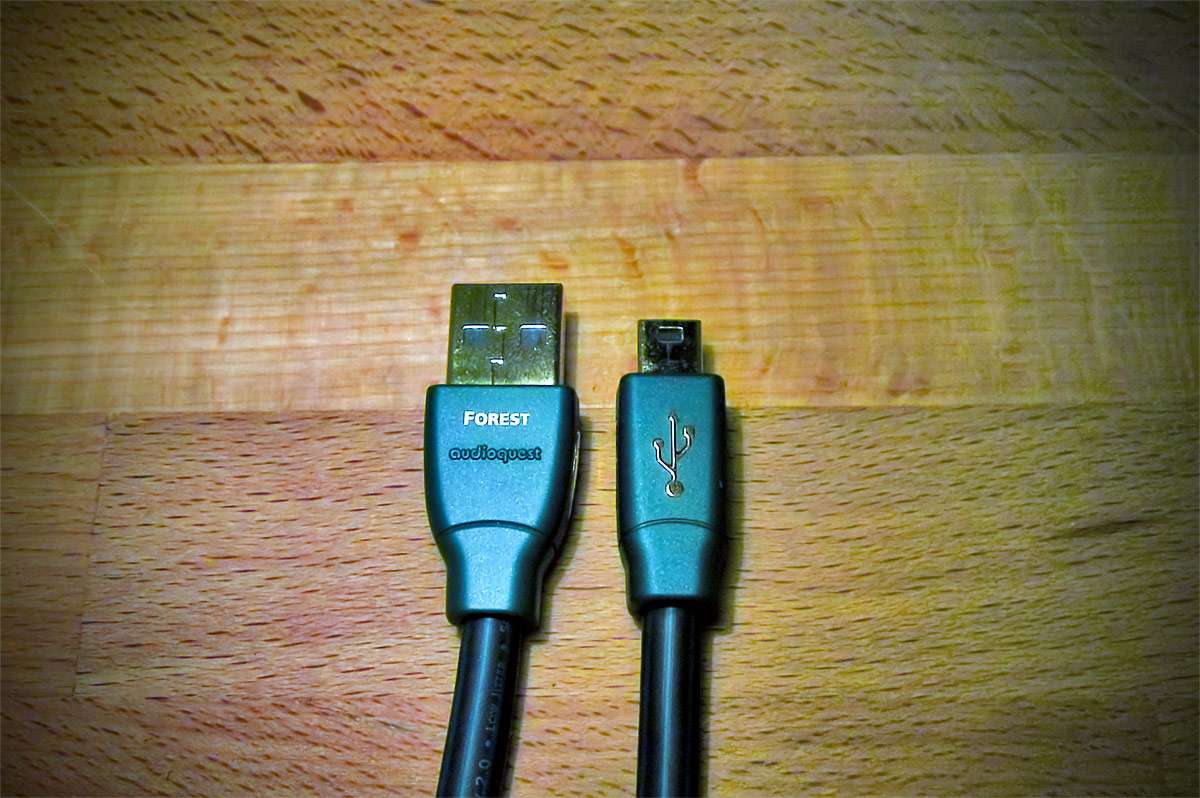 |
| Oh come on, it´s beautiful - for a cable |
Latest update: 09.01.2013

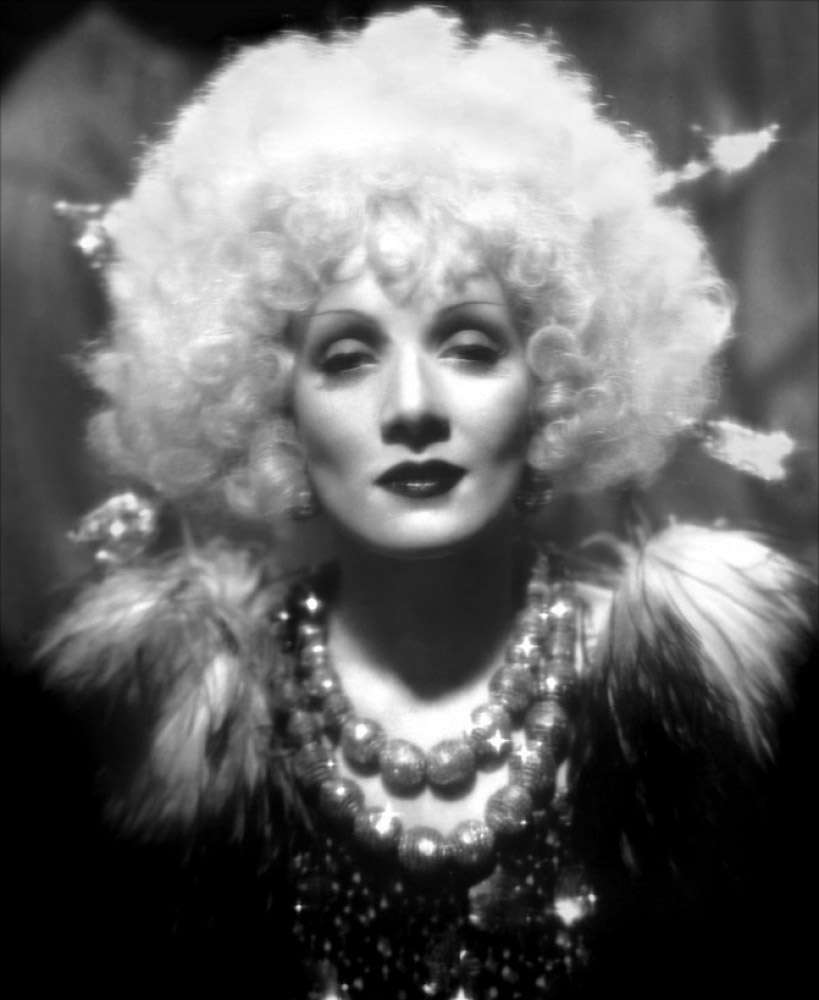




Interesting write-ups.
ReplyDeleteThank you, much obliged :)
DeleteYou are providing very useful information about the topic. Keep it up
ReplyDeleteJRiver Media Center Crack
Free Cracked Software
Pro Cracked Software